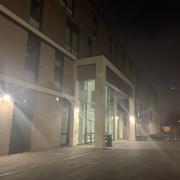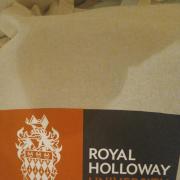
The transatlantic slave trade has undoubtedly had a long lasting impact on the way in which the world is shaped today. Between the 16th and 19th centuries between 10 million and 12 million African slaves were transported across the Atlantic Ocean to the Americas. Often when we talk about the abolition of slavery the conversation is centred around those in the US and Europe who had moral and political opposition to the slave trade. Rarely do we speak about the slaves who rebelled and fought for their freedom.
Maroon communities were escaped African slaves who established communities in the remote mountains and the intertropical terrains near plantations. They often allied with indigenous people and invoked fear in white slave owners through their guerilla warfare tactics. As maroon communities grew they would burn and raid plantations,freeing and inviting other enslaved people to join their communities. Maroon settlements were established in various countries across the Americas such as: Haiti, Brazil, Suriname, Jamaica, St Vincent,Puerto Rico,Colombia , and many more!
Approximately, 40% of the 10-12 million enslaved African brought across the Atlantic ocean were taken to Brazil some of whom managed to escape to form quilombos (a community of fugitive slaves).One of the most well known maroon/quilombo settlements in Brazil was Quilombo dos Palmares. This was the largest fugitive community to exist in Brazil and was situated in the Northeastern part of Brazil known as modern day Alagoas .It was composed of runaway African slaves who allied with indigenous people and other marginalised groups. They fiercely carried out guerilla raids on coastal sugar plantations whilst freeing other captives. Lasting almost a century. the inhabitants of Quilombo dos Palmares managed to defeat six Portuguese expeditions which tried to conquer Palmares between 1680 and 1686. However, unfortunately, in 1695 Quilombo dos Palmares was conquered and destroyed by a military force under the command of Domingos Jorge Velho.
Despite the fact many Maroon settlements have been destroyed and the people of the communities are now extinct there are several Maroon communities that still remain. Six maroon communities in Suriname and French Guiana make up the world’s largest surviving Maroon populations of African descent . One of these being the Saamaka community in Suriname. The Saamaka community have been living in Suriname for over 300 years ! However in the 1990’s they found their land invaded by Chinese, Canadian, and other multinational logging and mining companies permitted by the government without consulting the Saamaka community. After a decade of legal struggle over their land rights Saamaka won a ruling by the Inter-American Court for Human Rights in 2007 supporting their land rights in Suriname for lands they have historically occupied. Today the Saamaka community continue to uphold their vibrant and independent traditions. They speak variants of saramaccan which is a creole language deriving from various West and Central African languages, English, Dutch and Portuguese.
Maroon communities across the globe are a source of pride and inspiration for their descendants however much of their history and culture remains absent in our history books. When asked about the importance of studying global history a student in my school stated “ I think we should de-centre eurocentric History because it will validate people’s origins, particularly focusing on stories that have been suppressed by colonisation and marginalised voices. As a result, we will enrich in world affairs more and thus create more unity.” Maroons played a key role in emancipating slaves and resisting slavery and colonialism. It is essential that their stories are heard and commended.



























